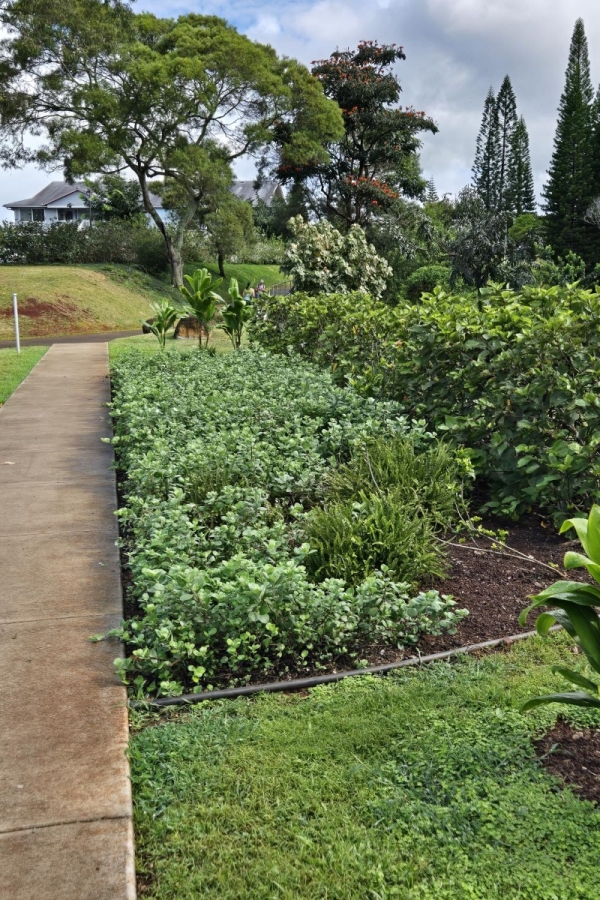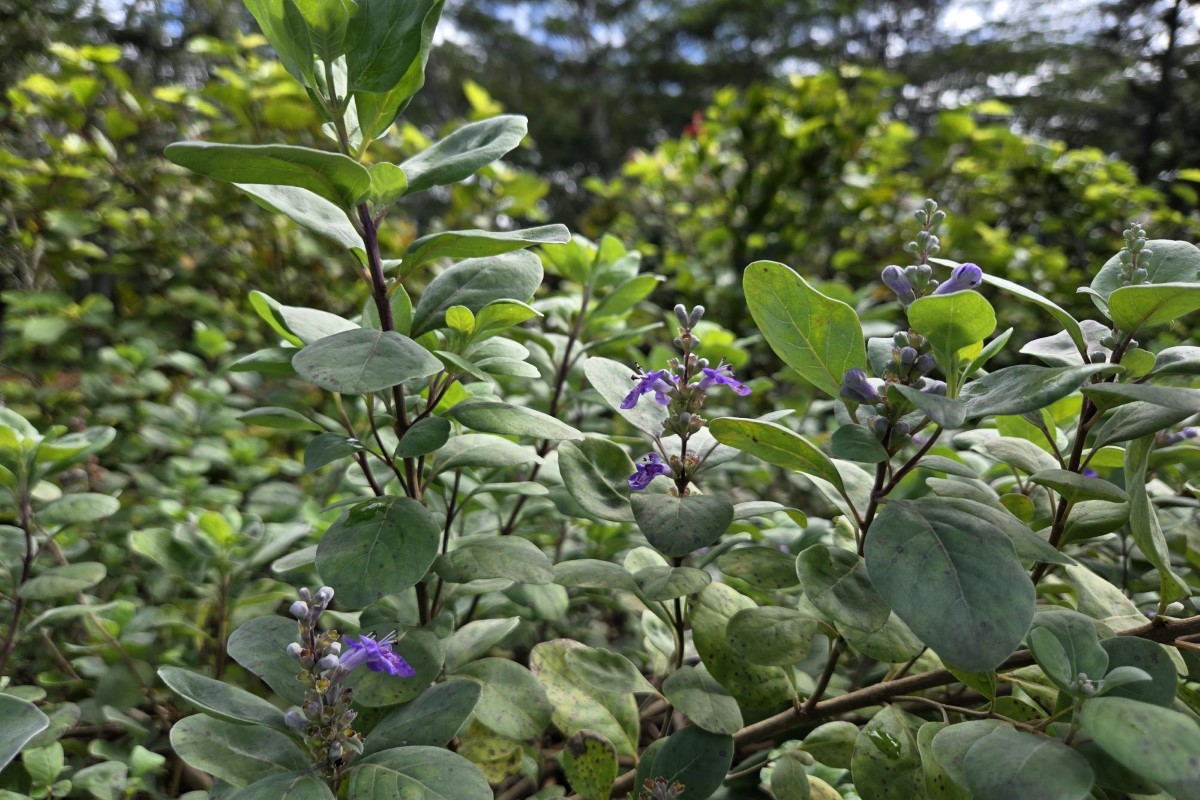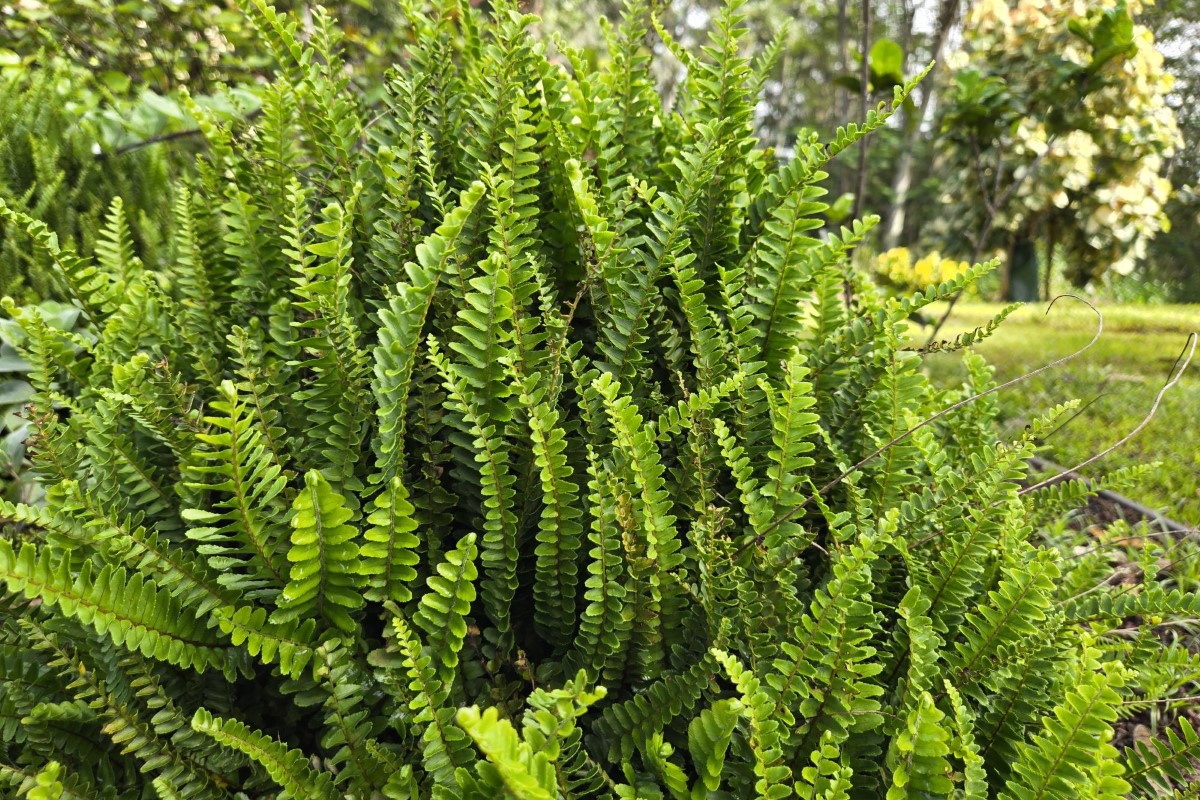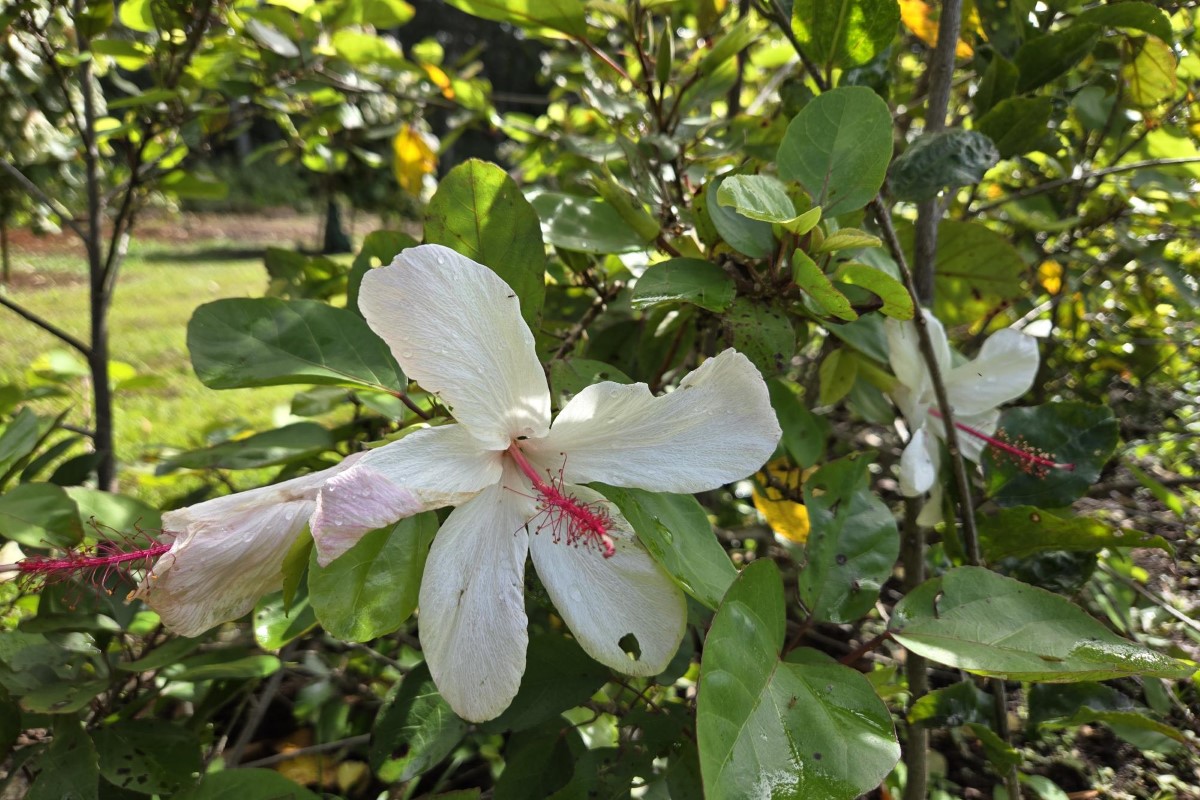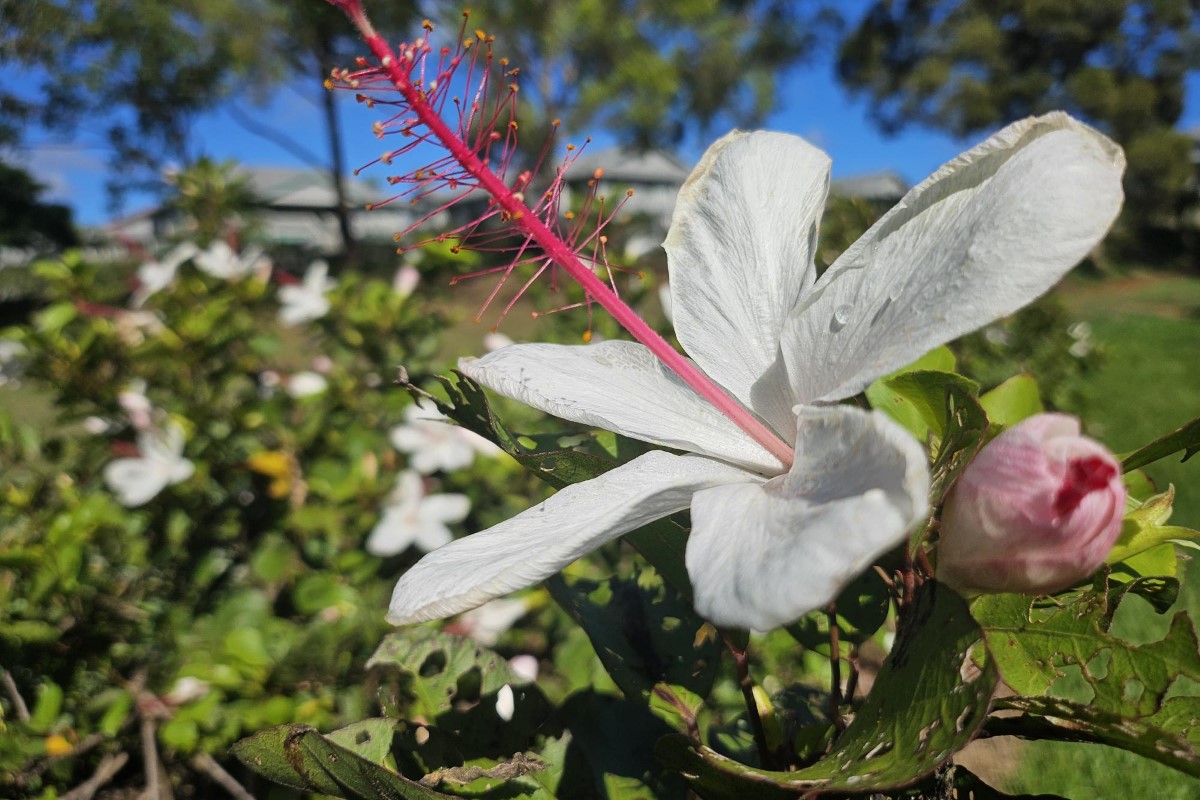Nature Walk – Zone 2
Hawaii’s native flora is as unique as it is diverse, with approximately 1,400 vascular plant taxa native to the islands, and nearly 90% of these are found nowhere else in the world. The rich tapestry of plants includes the native Akia plant, the Pohinahina, used medicinally by native Hawaiians, and the Kupukupu fern used in traditional Hula, are just a few examples of the islands’ botanical treasures. Conservation efforts are crucial to protect these species from threats such as habitat loss, invasive species, and climate change. Initiatives include surveying historic ranges, augmenting wild populations, and establishing new ones in safe harbors. The MTA Nature Walk was developed to highlight these plant species and other important fauna of Hawaiian culture and landscapes.
Zone 2 Plants
Pohinahina
Hawaiian Name: Pōhinahina
Scientific Name: Vitex rotundifolia
Common Name: Beach Vitex
The Pōhinahina (Vitex rotundifolia) is an indigenous plant to Hawaii, thriving in the dry, full sun exposure of coastal regions up to elevations of 3000 feet. This resilient shrub can grow up to 9 feet tall with a spread of 8 feet and is admired for its beautiful blue-violet flowers and pleasant sage-like aroma.
Historically, the leaves of Pōhinahina were used in traditional Hawaiian medicine to alleviate ailments such as headaches and stomach pains. Today, it is valued not only for its medicinal properties but also for its utility in lei making and its ability to provide excellent erosion control due to its hardy nature.
Adaptable and drought-resistant, Pōhinahina is a testament to Hawaii’s rich botanical heritage and the practical knowledge of indigenous Hawaiian flora.
Akia
Hawaiian Name: ʻAkia
Scientific Name: Wikstroemia uva-ursi
Common Name: ʻAkia
The ʻAkia (Wikstroemia uva-ursi) is a remarkable native shrub of Hawaii, thriving in the dry, coastal regions of islands such as Kauaʻi, Oʻahu, Maui, and Molokaʻi. This resilient plant is characterized by its dense growth, small oval-shaped leaves with a greenish-blue hue, and branches tinged with reddish-brown.
The ʻAkia is admired for its clusters of tiny yellow flowers, which exude a musky scent, particularly noticeable in the early evening, and its small orange or red fruits. A staple in Hawaiian landscapes, it is valued for its hardiness and low maintenance.
Culturally, the ʻAkia holds a significant place in Hawaiian traditions. Historically, its bark, roots, and leaves were used as a narcotic to stupefy fish, making them easier to catch. Despite its use in fishing, the plant is non-toxic to humans and birds, though its fruit is said to have an unpleasant taste.
The ʻAkia’s adaptability and vibrant colors when in fruit make it an attractive choice for a low hedge or accent plant in Hawaiian gardens, contributing to both the beauty and cultural heritage of the islands.
Kupukupu
Hawaiian Name: Kupukupu
Scientific Name: Nephrolepis cordifolia
Common Name: Kupukupu Fern
The Kupukupu fern (Nephrolepis cordifolia) is a resilient and indigenous species in Hawaii, characterized by its erect fronds that stand 1–2 feet tall, with each frond composed of numerous smaller pinnae. This versatile fern grows both as a terrestrial plant, with stolons spreading across the soil, and as an epiphytic plant, climbing up trees.
A unique feature of the Kupukupu fern is its underground tubers on the stolons, which serve as food storage and a means for reproduction, allowing new ferns to develop from these tubers. In Hawaiian culture, the Kupukupu fern holds significant value. It was traditionally used to decorate hula altars, symbolizing a place of learning and sprouting knowledge, as kupu means “to sprout.” The fronds are also utilized in lei-making, adding to Hawaii’s rich cultural heritage.
When cultivating Kupukupu, it is recommended to plant them in well-drained soil and avoid standing water to prevent yellowing and defoliation. This fern not only enhances Hawaii’s lush landscapes but also embodies the spirit of growth and resilience intrinsic to the islands’ flora.
Kokiokeokeo
Hawaiian Name: Kokio Keokeo
Scientific Name: Hibiscus arnottianus
Common Name: Hawaiian White Hibiscus
The Kokio Keokeo (Hibiscus arnottianus) is a native Hawaiian plant with a significant presence in the islands’ ecology and culture. This species, which includes both shrubs and trees, can grow up to 30 feet tall and is renowned for its striking white flowers, reputedly the only naturally fragrant hibiscus species in the world.
These flowers are not only visually captivating but also emit a delightful scent. The Kokio Keokeo thrives in dry to wet forests on Oahu and Molokai, and its beauty is celebrated in many old Hawaiian songs and stories.
Garden enthusiasts may choose to let this plant grow into its natural tree form or prune it into a shrub, depending on their preference. However, it is important to note that the subspecies Hibiscus arnottianus subsp. immaculatus is endangered and found only on Molokai, with fewer than a dozen plants remaining in the wild. This underscores the need for conservation efforts to protect these unique and culturally significant plants.
Ki (Ti plant)
Hawaiian Name: Kī
Scientific Name: Cordyline fruticosa
Common Name: Ti Plant
The Kī plant (Cordyline fruticosa), commonly referred to as the Ti plant, holds a significant place in Hawaiian culture. Brought to the Hawaiian Islands by early Polynesian settlers, it is revered for its versatility and cultural importance.
This tropical broadleaf evergreen thrives in the moist, semi-shaded areas of Hawaii’s wet valleys and forests. Its leaves serve a variety of purposes, including roof thatching, food wrapping, and use in spiritual ceremonies and rituals. The Kī plant is considered sacred to the Hawaiian gods Lono and Laka and symbolizes high rank and power. It is also believed to ward off evil spirits when planted around homes.
With its vibrant foliage, ranging from green to purple, and its ability to bloom lavender-colored flowers that yield red berries, the Kī plant is another true representation of Hawaii’s rich botanical and cultural tapestry.
